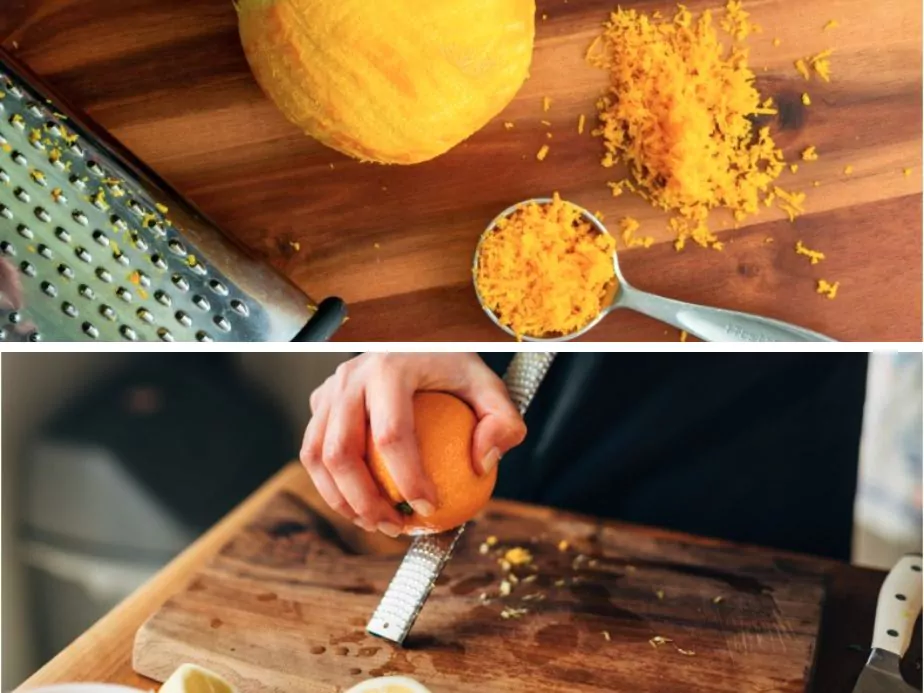How to Make Orange Zest the Right Way?

The citrusy aroma that wafts through the kitchen when you zest an orange is nothing short of intoxicating. But did you know there’s a lot more to this simple kitchen task than just scratching the surface? Today, we’ll delve deep into the world of orange zest and its cousins from other citrus fruits. Whether you’re making a citrus flavor packed dish or seeking the perfect orange hint in your cocktail recipes, this guide has got you covered.
1 What is Orange Zest?
Orange zest is the colorful part of the orange skin, which is often used to add a burst of fresh zest and flavor to various dishes. Unlike the bitter white pith underneath, the zest contains essential oils that are responsible for its vibrant orange flavor.

2 Why Zest?
Before we dive into the how-to’s, let’s understand why many recipes call for orange zest or its relatives like lemon zest and lime zest. Zest, whether from oranges, limes, or lemons, lends a concentrated citrus flavor, significantly more potent than citrus juice. So, if you’re aiming for a pronounced citrusy punch, like in baked goods or salad dressings, zested oranges or other citrus fruits are your best bet.
3 How to Zest an Orange: Zesting methods
Choose Your Orange (and Prepare It)
For maximum orange flavor, pick a medium-sized orange with firm skin. Before zesting, wash the entire orange thoroughly. This removes any residues, as you’ll be using the outermost layer.
Select Your Tool
There are several kitchen utensils you can employ:
- Micro plane Grater: This is the most favoured tool for zesting as it effortlessly extracts the fresh zest without much of the bitter white pith. It’s similar to a cheese grater but has sharp holes ideal for zesting.
- Box Grater: Most of us have one in our kitchen, usually for grating cheese. The fine grater side can zest an orange, but be cautious not to get the white pith mixed in.
- Paring Knife or Vegetable Peeler: This method will give you larger, thin strips of orange peel, which you can then finely chop. Ensure that you peel just the coloured part and leave the bitter white pith behind.
- Small Food Processor: This isn’t a traditional method, but if you first peel the orange using any of the above methods and then pulse it in a food processor, you can achieve a finely chopped zest.
4 Zesting Techniques

Depending on the tool, the technique might vary:
- For Microplane or Box Graters: Place a cutting board or metal plate below to catch the zest. Hold the grater with one hand and the orange with the other. Start zesting using light pressure in a downward motion. Rotate the orange slightly after each swipe, ensuring you’re only removing the top layer and avoiding the bitter pith.
- For Paring Knife or Vegetable Peeler: Gently scrape the surface to get thin strips of orange rind. Make sure to avoid the long groove of white beneath. Then, chop these peeled pieces finely for recipes that call for finer zest.
5 Storing Your Zest
If you’ve zested more oranges than required, no worries! Freshly grated zest can be stored:
- Airtight Container: In the fridge for up to a week.
- Frozen Zest: In a plastic bag in the freezer for months. However, frozen zest might lose some of its vibrant citrus flavors over time.
- Dried Zest: Spread the zest on a flat grater or a tray, let it air dry for several days, then store in an airtight container. While it won’t be as potent as fresh zest, it’s excellent for baked goods.
6 How Much Zest Do You Need?
For most recipes, the zest from one medium-sized orange equals about 1 to 2 tablespoons. But always check your recipe! For those curious about juice, one medium orange usually provides between 1/4 to 1/3 cup of orange juice.

7 Benefits and Uses of Orange Zest
Orange zest is rich in vitamin C and adds a refreshing taste to many dishes. It’s a wonderful addition to baked goods, salad dressings, and even cocktail recipes. The citrus zest, be it from oranges, lemons, or limes, is versatile. For instance, lemon zest or lime zest can often be a great alternative to orange zest in recipes.
The citrus flavor from the zest can also transform many dishes without adding extra juice, saturated fat, or calories. Whether it’s using the zest directly in recipes or infusing it in oils, it’s a must-have for most recipes.
8 Bonus Tip: Reuse Your Zested Oranges
After zesting, you might wonder about the fate of the zested oranges. Fear not! The orange rind can still be used. Extract orange juice, or use the entire orange for recipes that require the flesh. The juice and fruit are rich in essential nutrients, making them great for consumption.
9 Other Citrus Fruits and Their Zest
Just as orange zest comes from orange peels, you can derive lime zest from lime peels, and so on. The same motion you apply to zest oranges can be applied to other citrus fruits, too.
10 A Word of Caution
Remember the bitter taste that we’ve been emphasizing to avoid? That’s due to the white pith found beneath the coloured part of the fruit. It’s filled with a bitter flavor that can overpower the sweet and tangy essence of the citrus zest. So, while it’s rich in vitamin C and other nutrients, it’s best to avoid it in most dishes, especially when the recipe aims for the pure, unadulterated flavor of orange, lemon, or lime.
11 Wrapping Up
Orange zest, with its powerful punch of orange flavor and essential oils, is a gem in the culinary world. Whether sprinkled atop many dishes or infused into recipes, it’s a sure fire way to elevate the dish’s taste.
Zesting might seem like a simple task, but as with many things in the culinary world, the devil is in the details. From choosing the right orange to picking the ideal kitchen utensils and mastering the art of avoiding the bitter pith, making the perfect zest requires a bit of practice.
With this guide at your disposal, we hope that the next time you come across “zest of one orange” or any other citrus fruit in your recipe, you’ll tackle it with newfound confidence and zeal. Happy zesting!
Community Q&A
About This Article
This article has been viewed 324 times.



